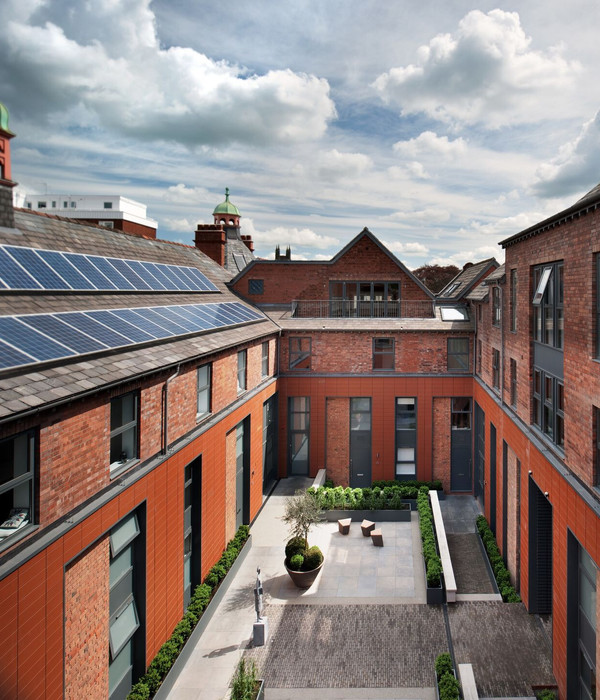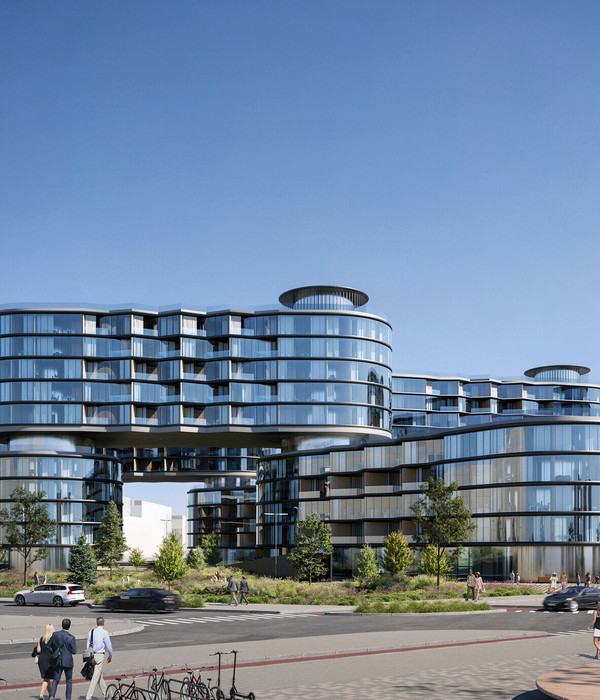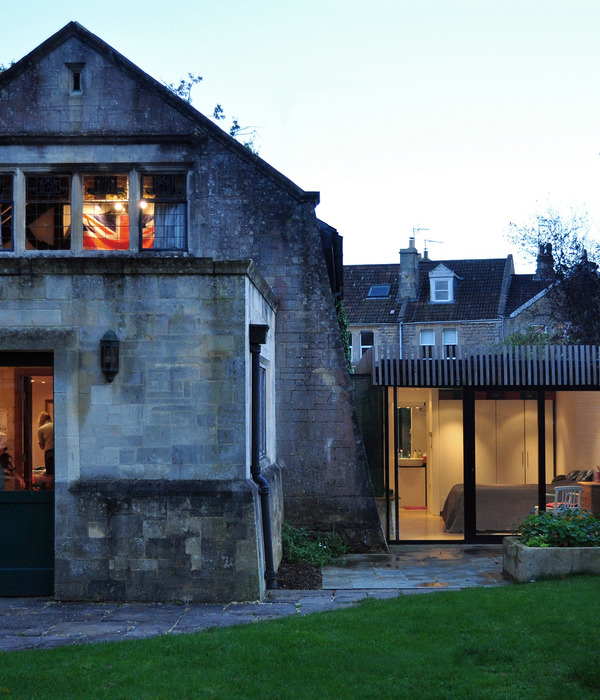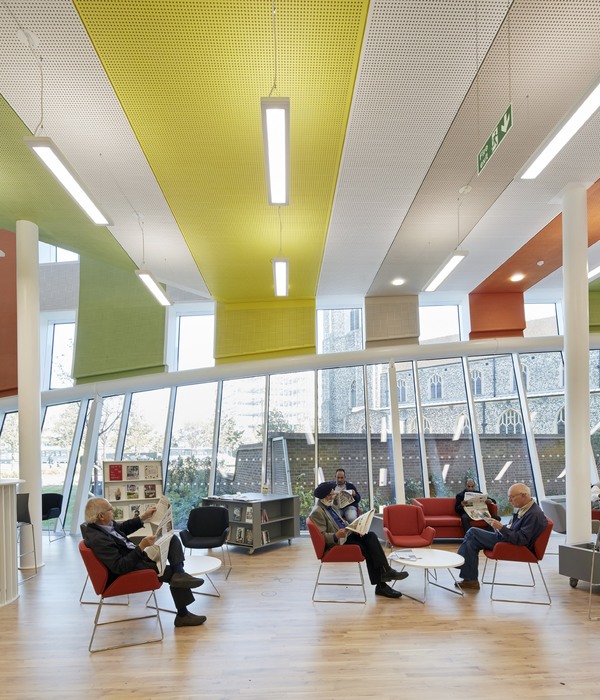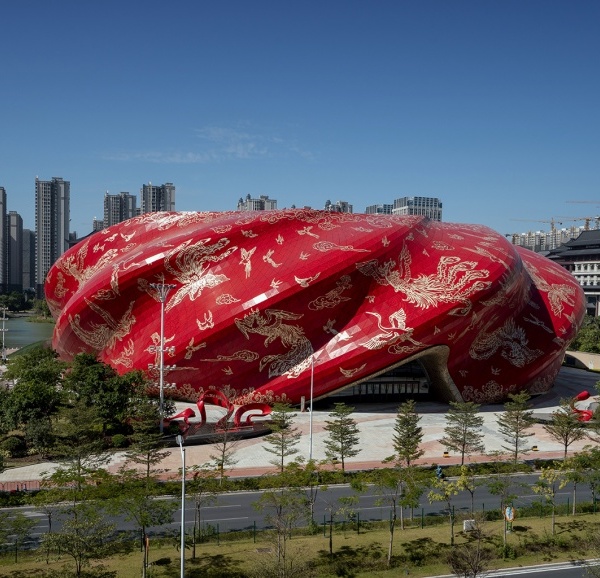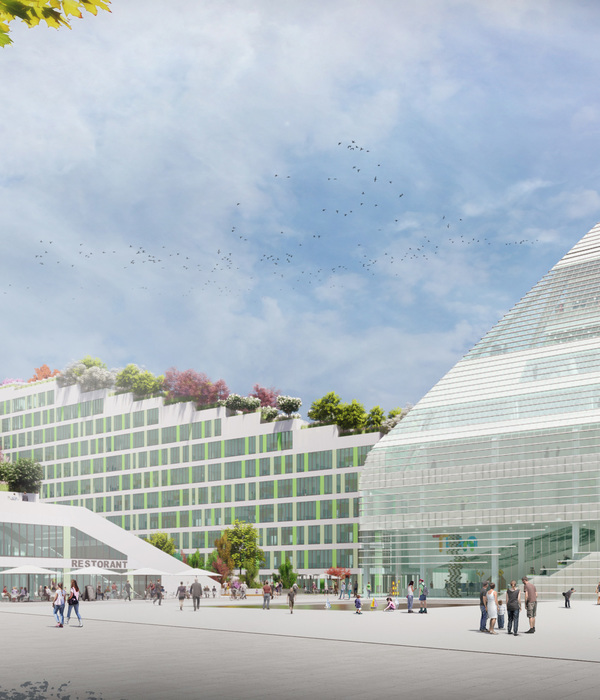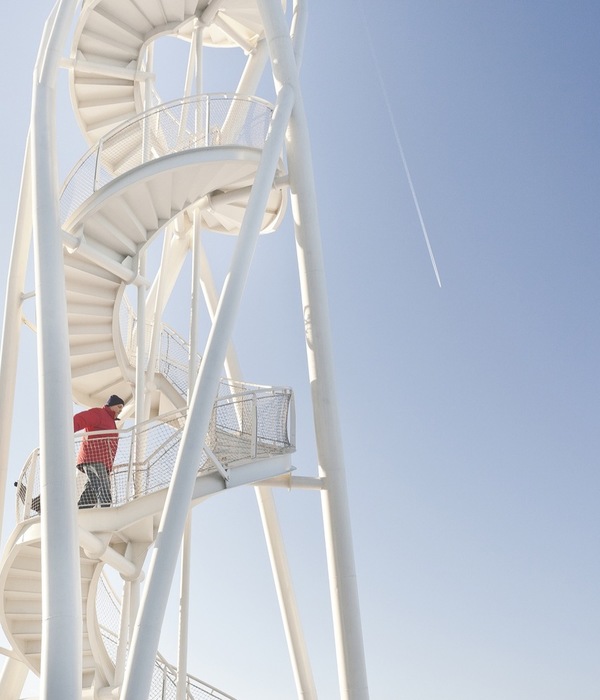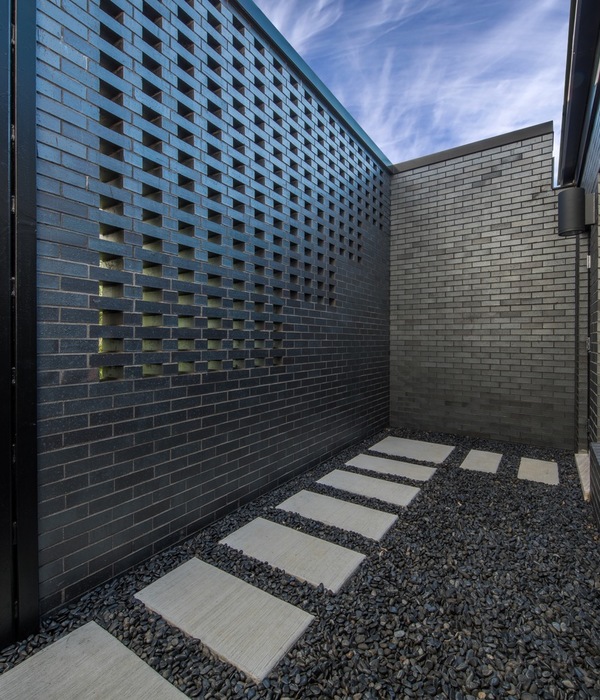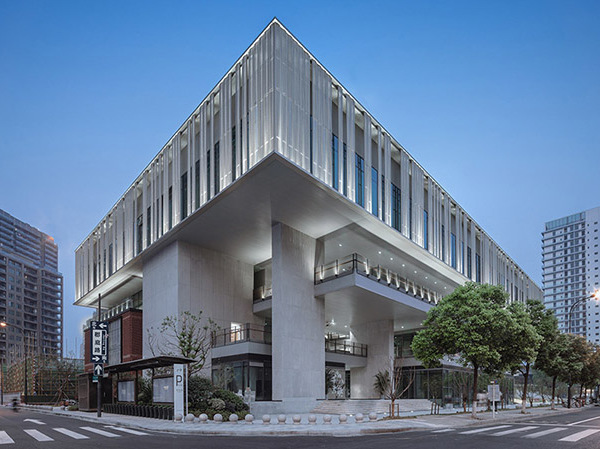柏林-泰格尔机场的原腹地将于2021年5月起改造成一个专为都市科技产业建立的研发工业园区,名为“柏 林TXL ——都市科技共和国”。由gmp·冯·格康,玛格及合伙人建筑师事务所整体设计的机场综合体自2019年被列为文保建筑,如今通过其功能用途的更新,建筑生命将得以延续。从城市规划和建筑布局的角度观察, 基地整体仍以带有入口大厅和塔台的航站楼建筑为中心,根据gmp提出的设计方案,该建筑群将被转化为一座创业与创新中心。
As of May 2021, the site of Berlin-Tegel Airport will be developed into a research and industrial park for urban technologies, the Berlin TXL–Urban Tech Republic. The buildings of the airport, holistically designed by von Gerkan, Marg and Partners Architects (gmp), have been listed as historic monuments since 2019 and will be adapted to house new functions. The urban design and architectural heart of the site will remain the central terminal building with entrance hall and tower, which will be transformed by gmp into a start-up and inno- vation center.
▼“都市科技共和国” 项目概览,overall of the project “The Republic’s balcony” © gmp Architekten
在柏林-泰格尔机场设计之初,gmp以原创建筑师的视角面对这一挑战性课题,对其后续使用提出未来设想。冯·格康教授早在2008年就提出以能源反哺之城为理念的“TXL plus”初步构想。施特凡·胥茨主导了航站楼建筑的设计调研,探讨不同的使用场景,还有依据“ 都市科技共和国”的全新需求,改造机场能源中心并与之构建建筑关系。
As architects of Berlin-Tegel Airport, gmp was particularly challenged to develop a vision for its subsequent use. In 2008, Meinhard von Gerkan had already sketched out the “TXL plus” concept for an energy-plus city. Under the leadership of Stephan Schütz, there followed studies of various use scenarios for the terminal buildings and for the connection and adaptation of the energy center to the new requirements of the Urban Tech Republic.
▼校园中心鸟瞰 (gmp/agn),View on the Campus-Mitte (gmp/agn) © gmp Architekten
自2019年以来,gmp受委托主导原机场主体建筑、车行道以及塔台的改造设计,在过去的将近50年间,这 三个建筑体共同印刻了代表柏林-泰格尔机场的独一无二的形象记忆。在1974年正式投入运营之后,这一区域承担了通往航站楼的中心入口功能,这里设有转乘大厅可短距离步行至正六边形登机环廊。根据目前的设计构想,主体建筑将变身研发工业园内的创业与创新中心,成为孵化未来都市科技的“论坛”。除了囊括一座演出会议中心的功能以外,这里还将为众多创业公司提供办公场所,另外还有受柏林政府委托负责机场改造项目的泰格尔项目有限公司,也将以此为其总部正式迁入。
In 2019, gmp was commissioned with the refurbishment and conversion of the former main building, the forecourt, and the tower, which together have characterized the unique image of the airport for almost five decades. Opened in 1974, that part of the building served as the central access to the terminal. It includes the lobby with transitions to the hexagonal ring containing the piers. As a start-up and innovation center, the main building will form the Forum of the future research and industrial park for urban technologies. In addition to an events and conference center, this will accommodate start-up companies; it will also house Tegel Projekt GmbH, the company commissioned by the State of Berlin to develop the site.
▼园区广场,入口门厅视角,Campus-Square, view to the foyer © gmp Architekten
从设计概念角度观察,以优化能源使用为目标的改造方案将建筑的布局组织纳入考虑,保留富有个性的 正三角形结构主体,并赋予其具有品质的空间体验。新增垂直方向的交通流线将向公众开放的建筑空间与户外基地相连,消解原机场功能布局中严谨的水平分层原则。建筑底层设计为会议区域、展示厅、车间以及工作室。一座宽阔大气的台阶将位于园区北面的广场与原入口功能的“共和国廊台”相连,打造一处理想的聚集场 所。曾经的转乘大厅将变身为未来园区的“中央广场”,因此这里将布局公共功能和具有代表性的区域,例如会议中心。在通往A航站楼的过渡区域,餐饮和休闲区域建立与公共空间的自然过渡,连贯通往位处六角形环廊建筑的贝特高中的过道。除此以外,gmp还提议通过搭建露台餐厅或都市农园,激活建筑屋面空间的生命力。
The conceptual design combines the energy efficiency upgrade of the buildings with a room layout that exposes the characteristic triangular structure so that it can be experienced. New vertical circulation routes link the building with the future publically accessible areas of the former airfield, thus overcoming the hitherto strictly horizontal layering of the airport functions. The lower levels are intended to accommodate conference areas, showrooms, workshops, and studios. Wide, open staircases connect the future Campus Plaza to the north with the Balcony of the Republic, the previous access level, which will become a place of congregation. Surrounding the former lobby, the future Agora, there will be public functions and prestigious areas, as well as the conference center. At the interface to the former Terminal A, eateries and lounges will create a flowing transition to the publically accessible areas of Beuth University in the former ring containing the piers. Fur- thermore, gmp is proposing to make active use of the roof areas either via gastronomy or urban gardening.
▼校园中心,登机环廊 (gmp/agn) ,Campus-Mitte Gate Ring (gmp/agn) © gmp Architekten
▼校园中心,空中步道 (gmp/agn),Campus-Mitte with “High-Line” (gmp/agn) © gmp Architekten
一座崭新的旋转楼梯位于建筑中央,构成二层至四层办公区域之间的交通流线,直接毗邻楼梯的位置还 设有一个公共交流区。在此,沿用三角形几何的钢筋混凝土框架结构基于10米的轴网模块,构成面积分别为 25平方米、50平方米或75平方米的可根据需求组合的办公单元,每个单元的分隔墙体按照外露的承重梁结构布局。主体建筑具有独特风格的外观设计将得以保留。经过玻璃幕墙的替换可达到能源使用的优化目标以及 建筑技术的更新换代,根据当下绿色建筑的标准,改造后的水平可达到DGNB德国可持续建筑认证标准铂金 级。
From the second to the fourth upper floors, a new central spiral staircase will link the offices that are strung along a shared communication zone. Here, the triangular reinforced concrete skeleton structure with a ten-meter grid defines the shape of the modularly combinable office units of 20, 50, or 75 square meters, the walls of which are aligned with the exposed structural beams. The characteristic external shape of the build- ings will be retained. With a new glazed front, amongst other measures, the energy efficiency and technical upgrade is intended to meet current standards and to obtain DGNB Platinum certification.
▼办公区域的旋转楼梯,Office level with spiral staircase © gmp Architekten
▼外露的三角形结构构件,Visible triangular structure © gmp Architekten
gmp与agn Niederberghaus & Partner事务所联合提出正六边形登机环廊的后续方案,将其转化为柏林贝特 技术高中的校园,该设计建立在汲取原建筑空间品质的基本理念之上。因此,不仅在登机环廊还有主体建筑中,使用者仍能体验到原机场设计中正三角形轴线赋予的结构秩序。穿行于建筑内部的车行道是对柏林-泰格 尔“驶入式机场”理念的核心诠释,如今将被打造为一个空中步道,由连桥与曾经的航站楼入口通道连为一体。 那么,从下车到达登机口最近只有不到30米的步行距离,这一经典的车行道元素也将以全新形象呈现在未来 绿色的园区中心。
In cooperation with agn Niederberghaus & Partner, gmp has developed the basic concept for the conversion of the hexagonal ring containing the piers for Beuth University of Applied Sciences Berlin, ensuring that the architectural qualities of the building will be retained. Therefore, the triangular construction grid will remain exposed and visible in the building ring as well as in the main building. The inner forecourt, the conceptual core of the “drive-in airport” (Berlin-Tegel), will be remodeled to form a skywalk that links with the former terminal entrances via small bridges. In this way, the forecourts from where the distance to the aircraft only measured 30 meters are retained within the future green campus center.
▼夜景 – 建筑屋面空间的激活,night view – Activation of the roof terraces © gmp Architekten
▼总平面图,Site plan © gmp Architekten
{{item.text_origin}}

